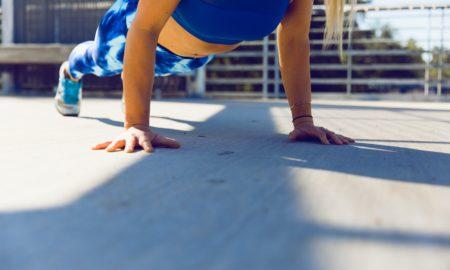These two questions are rhetorical, of course, as most of us realize that such things are not rigid rules. What they indicate instead is that most of us work out according to convention, tradition and imitation. Of course, no one ever said we must do one rep immediately after another. It just seems the natural thing to do, and what sufficient cause is there to do otherwise? And what the heck, 10 is a nice, easy round number, so why not 10? For the beginner, especially if the individual has no athletic background, almost any type of training is stressful enough to induce adaptation through size and strength increases. Going from zero training to even low-moderate intensity activity represents a dramatic increase in the stress/intensity level of the beginner’s body. And for a while he will continue to progress merely by adding weight to his exercises and resting for shorter intervals.
As the individual progresses toward the more advanced stages of development, however, the formula becomes more and more complex by the increasing presence of particular mitigating physiologic changes. Specifically, the body’s recuperative subsystems become less proficient in coping with the demands placed on them by very intense muscular contractions as we grow larger and stronger.
Physiologists have discovered that the average individual has the capacity to increase his strength by some 300 percent, while his ability to compensate for stress can increase only 50 percent. This means that the likelihood of overtraining increases as we get bigger and stronger. A 20-inch arm contracting maximally obviously places much higher demands on the body’s resources than does a 12-inch arm contracting with maximum force and intensity.
This was made dramatically clear to me some time ago when I was working out with a 14-year-old friend. We happened to be doing concentration curls simultaneously, he with a 25-pound dumbbell and me with 80 pounds. At the conclusion of the set, I noted with considerable chagrin that while that one heavy set to absolute failure caused me to breathe like a racehorse and sweat profusely, my young partner was as fresh as a daisy. He also noted the difference in our condition following the set and let me know it with more than a little delight. After thinking about it for a moment, and then looking at my 20-inch-plus arms next to his 12-inch arms, it became obvious that my greater mass working at maximum intensity used up a lot more fuel and oxygen and produced heavier quantities of waste products than his.
Around this time in my career I had reached an impasse in my progress. Despite my usual heavy, intense training, I couldn’t seem to add much mass. I discovered that this was due to the fact that I had fully adapted to the methods I’d been using for some time, namely preexhaustion and forced-rep training. I had made the best gains of my life on that type of training, going from a bodyweight of 195 to more than 210 pounds, but now I was stuck at a plateau.
What I needed was a new method that would allow for even more intense contractions while slowing the buildup of waste metabolites such as lactic acid and the onset of the ischemia that might prevent ultra-intense effort. This view is corroborated by Edington and Edgerton in their fine textbook on exercise physiology, The Biology of Physical Activity:
‘Muscle contractions can become so intense that blood flow to the muscle is decreased…. In effect, not enough time between contractions is permitted for the vasculature to fill before the onset of the subsequent contraction. Blood flow to the working muscles does not decrease at high work intensities when the duration of the contractions is short enough and the duration of relaxation is long enough….’
I didn’t think there was much I could do to shorten the duration of the contraction without compromising the effort I wanted to generate, but who said you had to perform two or more reps in rapid succession or that a weight allowing six to 10 reps was best? So I started using rest/pause training.
In my version of rest/pause training a weight is selected that allows only one rep done in perfectly strict style. Maximum weight, of course, requires a maximum effort, so the intensity will be high. And putting the weight down for 10 seconds following each rep allows for normal blood flow throughout the muscle so that you can continue with another maximum effort following the 10-second rest/pause. After the second rep another 10-second rest/pause interval is allowed to elapse before performing the third rep. By the third rep your strength will be down, and you will have to either decrease the weight by about 20 percent or have your training partner provide just enough assistance so you are able to barely complete it. The third rep should be followed by up to a 15-second pause, as fatigue will unavoidably set in and more time is needed for recovery. I think four reps is best, as you will not have the energy to exert yourself maximally after that. I started out trying six reps but found that was too much. Four is best.
I found this method very productive, as my strength and mass skyrocketed. It is very intense, yet I found myself adapting to it, so after several months of rest/pause training as described, I upped the intensity again by adding a maximum negative to each of the four reps. After each rep of incline presses, for instance, my partner would apply extra downward pressure so the negative was almost maximum. Another variation was to complete the four maximum positive reps and then do three negatives in rapid succession immediately afterward.
After a couple of months of exclusively rest/pause training, I found that I yearned for some of the other Heavy Duty methods, such as forced reps and preexhaustion. So I combined them. For one thing, the performance of several reps in rapid succession is what provides the pump. And while the pump is not necessarily indicative that growth has been stimulated, it does have an important psychological effect that should not be overlooked. Also, in rest/pause training you are performing sets of exercises in which every rep is a maximum, unlike the normal style of Heavy Duty, where only one rep of each set, the last one, is truly a maximum effort. Because of these and other reasons, it is probably best not to perform rest/pause exclusively for more than a month at a time.
How you combine rest/pause with other types of training is not too important as long as the intensity remains high and the duration brief.
The following are excerpts from my training journals concerning rest/pause:
December 4, 1978:
My first rest/pause workout was interesting and exciting. Lifting a maximum weight every rep followed by a time delay stimulated me and created a better pump than I had expected. Most notable now, one hour after that workout, is the feeling of stimulation deep down in the muscle with a good pump, and tremors of a gross nature in my arms, hands and worked areas.
Today’s workout:
Chest: Nautilus Flye with 200 pounds, first with my right arm done for six reps with an arbitrary rest/pause of seven to 10 seconds average between each rep. Fifteen seconds seemed too long, as I tended to cool down and lose my concentration. Same with the left arm. One set each pec. Nautilus Omni Bench Press with 200 pounds, performed with both arms, 10-second rest/pause, eight reps, one set.
Negative dips on Nautilus Multi-Machine: One set with the entire stack.
Shoulders: Nautilus Laterals, 170 pounds performed bilaterally, eight reps, 10-second rest/pause, one set.
Biceps: Nautilus Omni Biceps Machine, 70 pounds; alternated arms with about a five-second rest/pause. Two sets, six reps.
December 5, 1978
Mild soreness from yesterday’s workout.
Today’s workout:
Legs: Nautilus Thigh Extension, 200 pounds, one leg at a time (unilateral) six reps, 10-second rest/pause, one set.
Leg curls: 130 pounds bilaterally, 10-second rest/pause, six reps, one set.
Toe Raises: Nautilus Multi-Machine, 360 pounds, unilateral, 10-second rest/pause, six reps, one set.
Back: Nautilus Pullover, 250 pounds, bilaterally, 10-second rest/pause, six reps, one set.
Close-grip underhand pulldown: 260 pounds, bilaterally, eight reps, one set.
Shrugs: On Universal machine, entire stack, eight reps, 10-second rest/pause, one set.
Rear-delt machine: 150 pounds, five reps, 10-second rest/pause, one set.
Pecs: Universal Incline Press, bilaterally, 245 pounds, six reps. (One set done to test strength; not part of usual workout.)
As you can see, I averaged 10 seconds for the rest/pause. For each bodypart I averaged only a couple of sets and generally did six reps per set. The first workout I totaled only six sets and the second, eight sets. Some exercises were performed bilaterally (left and right sides working together) and others unilaterally (one side at a time) for variety. My next two workouts on December 8 and 9 were pretty much repeats of the first, without much improvement. Then, after one day of rest, I resumed on December 11 and things really started rolling:
December 11:
Nautilus Flye: Performed in identical fashion to first workout, this time with entire stack of 240 pounds vs. only 200 pounds last week. Unbelievable!
Nautilus Omni Bench Press: 240 pounds vs. 200 pounds last workout!
Negative dips: Stack plus 15 pounds of additional plates (too light), used just the stack last workout.
Nautilus Behind-the-neck torso: first two rest/pause reps were done with 200 pounds and last four with 180 pounds and some assistance.
Omni Biceps: 90 pounds each arm; pretty easy, probably could have used more. Only used 70 pounds last week!
December 12:
Nautilus Thigh Extension: Same fashion as last workout, 220 pounds each leg; could have used more, wasn’t quite a maximum effort. Only used 200 last week.
Squats: First workout, 455 pounds, six reps normal fashion; 485 pounds four reps normal fashion. No rest/pause with squats.
Nautilus pullovers: No change.
Rear-delt machine: One set performed in normal fashion (didn’t record weight).
Incline Universal press: Did rest/pause as last week, 265 pounds vs. 245 last week.
Great strength improvements in one week with rest/pause. Due to a restricted diet there has been no weight gain, but no loss either. But muscles seem rounder with more cuts. Something is happening!
In comparing these workouts, it’s clear they remained pretty much the same in terms of exercises, sets, reps, rest/pause intervals and so forth. However, the strength increases in one week were quite good, although they might be explained as the result of ‘learning’ or adaptation to the new system. I continued training with rest/pause in the fashion described above, the only changes being the reduction in reps per set from six on the average to four on the average.
I didn’t mention in my training journal that in those early rest/pause workouts I was given assistance by my training partner on the third rep and beyond. Such assistance did not make the completion of the rep easy; it just made it barely possible. Within a few weeks it became apparent that rest/pause was of tremendous value because my strength climbed steadily upward. And while my bodyweight remained the same, I went from being fairly smooth to very cut up by February 3, 1979, the date I won my first pro show, beating such greats as Robby Robinson, Danny Padilla and Roy Callender.
My training for the February 3 contest started December 28, 1978, and it consisted of rest/pause with a couple of variations. Some workouts I would use weights that allowed two or three reps in succession with no rest/pause at all; in others I would use a weight in rest/pause fashion with resistance added after the positive aspect of the rep in order to get a maximum or near maximum negative. There was no pattern to these variations’I performed them as experiments or just as a whim, for variety.
My strength continued to climb steadily, however, even while dieting strictly on about 1,400 calories a day. By January 7, 1979, my Nautilus flye was up to 326.2 pounds (the entire stack plus 76.2 pounds in plates) vs. the mere 200 pounds I used in my first rest/pause workout on December 4, 1978. My negative dips on the Nautilus Multi-Machine were up to the stack plus 105.2 pounds for four consecutive negative reps vs. the stack only for four reps in my first workout. My incline press on the Universal went from 245 pounds that first rest/pause workout to 400 pounds by March 17, 1979. That’s an increase of 155 pounds in approximately 10 weeks.
As I said earlier, while my bodyweight didn’t change much after I started rest/pause training, my appearance altered dramatically, suggesting that while I had lost fat, I also gained muscle. On December 4, 1978, I weighed 217 pounds and was smooth (I wasn’t on steroids at the time). As I commented in my journal on December 11, however, ‘There has been no weight gain, but no loss either. But my muscles seem rounder with more cuts. Something is happening!’ By January 1, 1979, I was on steroids in preparation for the February 3, 1979 Southern Professional Cup, which I won at a bodyweight of 213 pounds. So while I actually lost four pounds according to the scale, it was quite obvious from my improved appearance that I had lost considerable fat and gained quite a bit of muscle. That was the best condition of my life up to that point, and it was achieved using rest/pause training with the minor variations already described.
Next month I’ll present a suggested rest/pause routine along with some nutrition guidelines.
Editor’s note: Mike Mentzer books are available from Home Gym Warehouse, 1-800-447-0008, or visit www.home-gym.com. IM




















You must be logged in to post a comment Login